Rebuttal to: Remote Takeover on 9/11: A Critical Analysis
Jay H. apathoid@earthlink.net
(numerous emails asking for a rebuttal)
Apathoid is apathetic and apparently agrees with Rick that Remote Control Take
over is a plausible hypothesis.
"With modern technology, almost anything is possible; certainly "robo-jets" are
possible." - Apathoid, airline mechanic
From article on
Remote Takeover on 9/11:
A Critical Analysis (PDF).
[Comments from Rick are in red brackets] photos added for
clarity
Click here for Jay's
Original PDF document
 [This is an informative analysis, showing the role of the Cabin Air Pressure Outflow
Valve. However, it did not sufficiently cover how the CAPOV could have been tampered
with, to release the air from the fuselage, suffocating the pilots, crew,
passengers, and duped hijackers. The Flight Management System is
discussed, acknowledging the possibility that it could have been modified for
Remote Control.]
[This is an informative analysis, showing the role of the Cabin Air Pressure Outflow
Valve. However, it did not sufficiently cover how the CAPOV could have been tampered
with, to release the air from the fuselage, suffocating the pilots, crew,
passengers, and duped hijackers. The Flight Management System is
discussed, acknowledging the possibility that it could have been modified for
Remote Control.]
* Apathoid (Jay H.) does not deal with the hypothesis in the above
video.
* He merely stated that the process is difficult. So what? That's
their job. Boeing
does many difficult things (including flying an
F16 by Remote Control) and
succeeded, as proven by their patent, which requires a working model.
* He
proposes nerve gas which is unnecessary when the air is let out of the cabin.
* Much RCTO capability was already built into the Boeing jets. Nobody had to sneak
in the planes to install it.
* The workers were making the plane hijack proof - a
very worthy cause that installers would agree with.
I'm an Aviation Maintenance Technician/Avionics Technician for a
major US airline. I've been in this industry for 11 years and working on
airliners for 7 of those. I have extensive experience on both aircraft types
used on 9/11, doing both routine maintenance (767 overhaul for two and a half
years) as well as non-routine maintenance, ie troubleshooting and repair. I've
worked on pretty much every system on the 757/767. My main areas of experience
are the Electrical System, Autoflight System, Navigation System, Communications
System, Indicating and Warning Systems. I also have a good bit of modification
experience installing such systems as: Predictive Windshear, Enhanced Ground
Proximity Warning, Inertial Reference System, Fuel Tank Transient Suppression
(known as the TWA 800 mod), Passenger Entertainment, post-911 Secure Cockpit
Door Modifications, as well as dozens of smaller modifications usually brought
on by FAA Airworthiness Directives. Most of these modifications require a major
wiring rework and installation of new wiring and equipment. I believe my
avionics background, specifically my 767 experience, qualifies me to talk about
what it takes to turn a 757/767 into a drone and the major difficulties of doing
so.
Introduction
Central to many "inside job" 9/11 conspiracy theories is the
idea that hijackers weren't controlling the 4 ill-fated flights involved in the
attacks. Instead there was some sort of remote system guiding the aircraft to
their targets. How might this work? Lets look at the options
:
1) Military tankers fitted as
"drones" and disguised to look like AA and UA jets. The problem with this
approach is the questions that remain unanswered. What happened to the 4
flights? The passengers and crew? The airplanes themselves? Neither the people
nor the airplanes were ever heard from again, that much we do know. A further
look at this theory really makes it seem implausible especially since the
airlines involved, United and American, would have to be involved in the murders
of their employees and customers. Think about this for a moment. What possible
motive would these airlines have to do that? Especially since they've lost
billions of dollars in the wake of
the attacks. United, having lost close to
10 billion dollars itself (http://www.wsws.org/articles/2005/may2005/unit-m13.shtml),
wallowed in Ch. 11 for 4 years. American has only recently returned to
profitability after suffering staggering losses itself, barely escaping
bankruptcy. These airlines had everything to lose and nothing to gain by
partaking in a government sponsored terror operation. If you are thinking that
only a few fat cats agreeing to this would be all that was necessary, think
again. The pilots are dead - they were not involved. So, if the 4 flights landed
safely somewhere else as part of the conspiracy, thatís a pretty neat trick
considering the pilots would never agree to be murdered. How did they fly the
planes to secret bases against the pilots will? Remote control? I'll go into
that in lucid detail a bit later. But wait a minute, if they can control the
airplane from the ground, why go to the trouble of military drones then? Why not
use the actual flights themselves in the attack?
2) No planes at all. This theory is not worth going over in
detail because of the myriad of dilemmas that need reconciliation. The biggest
one being the fact that hundreds of people saw American Flight 11 crash into the
North Tower with their own two eyes. Tens of thousands, if not hundreds of
thousands, saw United Flight 175 hit the South Tower with their own eyes. Enough
said.
 3) Remotely guiding Flights 11, 77, 93 and 175 into their
respective targets. This solves all of the problems presented above and then
some. But how would it be accomplished, theoretically? Is there an easy way
? Short answer. No, there is not an easy way to do this for two reasons:
3) Remotely guiding Flights 11, 77, 93 and 175 into their
respective targets. This solves all of the problems presented above and then
some. But how would it be accomplished, theoretically? Is there an easy way
? Short answer. No, there is not an easy way to do this for two reasons:
-A very well trained flight crew.
-A very complex and very redundant web of systems that work
together to control every aspect of flight.
Moreover, the pilots have complete control over these systems
from the flight deck, and they are constantly monitored by the airplanes
defenses such as the Master Caution/Warning System, Engine Indicating and Crew
Alerting System (EICAS) as well as the Aircraft Condition Monitoring System (ACMS).
I'm getting ahead of myself, though. I'll go into these systems later on, in
depth, and show how they can not only detect a sabotage, but detect problems in
real-time as they happen.
The remainder of this essay will concentrate on scenario 3. I
will outline an array of possibilities for remotely guiding the airplanes and go
over the difficulties of each. These difficulties can be installation problems,
functionality problems and most importantly - the crews ability to defeat an
intrusive system by ultimately killing the power that feeds it through a variety
of methods, and I will go over all of those.
Glossary of Terms/ Acronyms
First of all, I will be using lots of acronyms in this essay.
Aviation loves its acronyms, I have a listing in my toolbox that has over 700
aviation maintenance acronyms! I've already mentioned a few, but I will make a
list here for reference.
AC - Alternating Current
ACARS - Aircraft Communication Addressing and Reporting System
ACMP - Alternating Current Motor Pump
ACMS - Aircraft Condition Monitoring System
ADC- Air Data Computer
AFCS - Automatic Flight Control System
APU - Auxiliary Power Unit
ARINC - Aeronautical Radio Incorporated
BIT - Built In Test
BITE - Built In Test Equipment
CDU - Control Display Unit
CRT - Cathode Ray Tube
DC- Direct Current
EDP - Engine Driven Pump
EEC - Electronic Engine Control
EICAS - Engine Indicating and Crew Alerting System
ER - Extended Range
ETOPS - Extended Twin-Engine Operations -or- Engines Turning Or
Passengers Swimming.
FADEC - Full Authority Digital Electronic Control
FBW - Fly By Wire
FCC - Flight Control Computer
FMC - Flight Management Computer
FMS - Flight Management System
GCU - Generator Control Unit
HMG - Hydraulic Motor Generator
IAS - Indicated Airspeed
IDG - Integrated Drive Generator
ILS - Instrument Landing System
IRS - Inertial Reference System
LCCA - Lateral Central Control Actuator
LNAV - Lateral Navigation
MEC - Main Equipment Center
MCDP - Maintenance Control Display Panel(Autopilot)
MU - Management Unit (ACARS)
PBE - Portable Breathing Equipment
PCA - Power Control Actuator
TMC - Thrust Management Computer
TRU - Transformer Rectifier Unit
VHF - Very High Frequency
VNAV - Vertical Navigation
Before going on to the different takeover scenarios, I want to
give a
very brief overview of the
systems that I'll be talking about, just to give you a basic idea of how things
work and interact with other systems. First, an overview of the aircraft
themselves.
757/767 Overview
The 757 and 767 are the first of the Boeing generation of
"electronic jets". The 767 came out first in 1982, the 757 in 1983. These
aircraft may look a bit different on the outside, but the flight decks and
systems are nearly identical. For all intents and purposes, the systems I'll be
describing below are the same for both aircraft with only minor differences.
These airplanes have numerous built-in fail safes and are extremely redundant in
their systems, thus would be difficult to commandeer remotely.
Electrical System
Electrical Power on the B757/767 is provided by several sources
which can't be run in parallel. The sources are the Engine IDGs, APU
Generator (usually ground only, but can be run in flight), External Power, and
the aircrafts Main Battery. There is also a backup Hydraulic Motor Generator (HMG)
available on the 767ER which can supply 28 Volts DC in the event of a failure of
both IDGs, it runs off the Center Hydraulic System and is not available on the
non-ER versions of the 767 or the 757.
The IDGs provide 3 phase 115 Volts AC 400 Hz power to the
aircrafts Main AC busses during normal operation. These buses are monitored by
their respective GCUs, which ensure that the equipment receiving power from the
bus is protected from a variety of fault conditions such as overvoltage,
undervoltage, etc. Normally the buses are connected by a Bus Tie Breaker, but
the pilots can operate the busses in isolation if desired. In addition to
operating the busses in isolation, the busses can be switched off from the
flight deck manually. DC power is typically generated by TRUs which convert the
115VAC to 28VDC to power the essential instruments on the Standby DC Bus. In the
event of a complete AC failure, the ships Main Battery can supply power the
Standby DC Bus for approximately 30 minutes. The Hot Battery Bus is a part of
the DC Standby Bus and is physically connected to the Battery. When AC power is
lost the DC Standby Bus essentially becomes the Hot Battery Bus through the
Standby Power Relay. Sounds confusing, eh? It is, but the system works
flawlessly (usually).
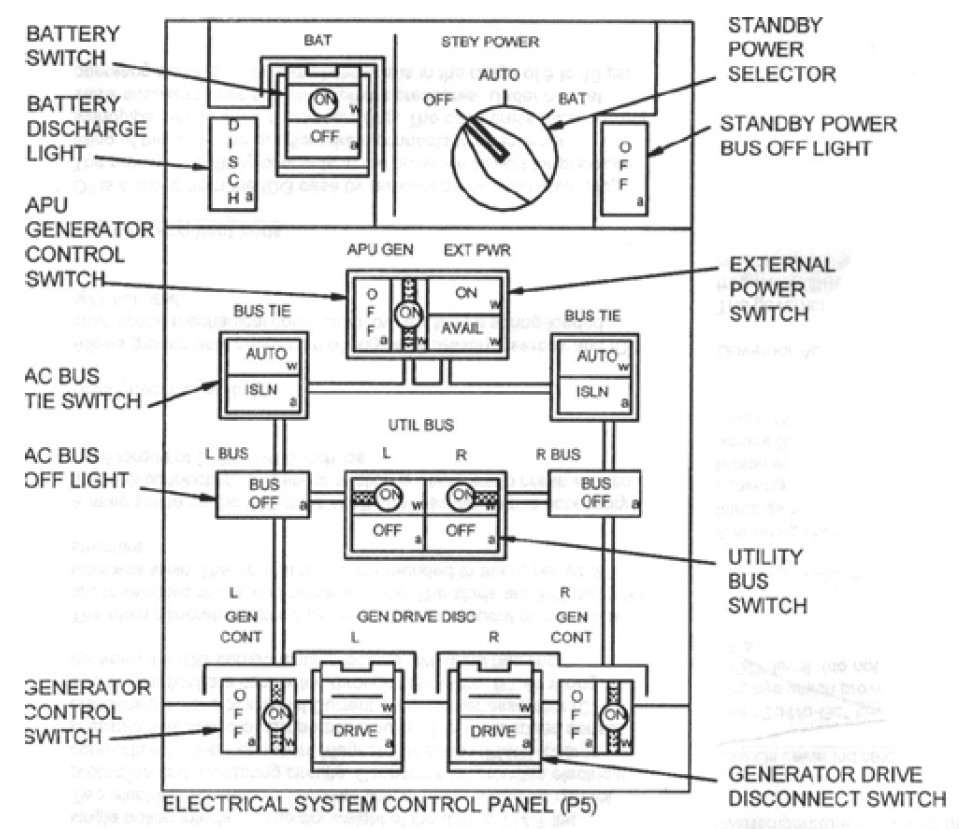
Flight Deck Electrical System Control Panel
Auto Flight System (AFCS)
The B757/767 has a very complex and redundant autopilot system.
There are
three completely independent
AFCS Systems on the 757/767. There is literally 3 of everything on these
airplanes except for engines and wings. As far as the AFCS concerned that means:
3 Flight Control Computers (FCCs), 3 Roll Servos or LCCAs, 3 Pitch Servos, 3
Rudder Servos and 3 ILS Receivers (not part of the AFCS, but are slaved their
respective FCC). In case you are wondering, yes, only 1 system operates at a
time, the other 2 are there for backup.
The Thrust Management System has
only 1 computer, the TMC - I won't go into it because itís not really important
for this discussion as the engines can't steer an airplane. In the scenarios
below, when I refer to the AFCS, I'm am also talking about Autothrottle.
The MCDP interfaces with all AFCS
components and is the EICAS of the Autopilot System. This unit can detect faults real time and store them for later viewing by
maintenance.

FCC schematic #1
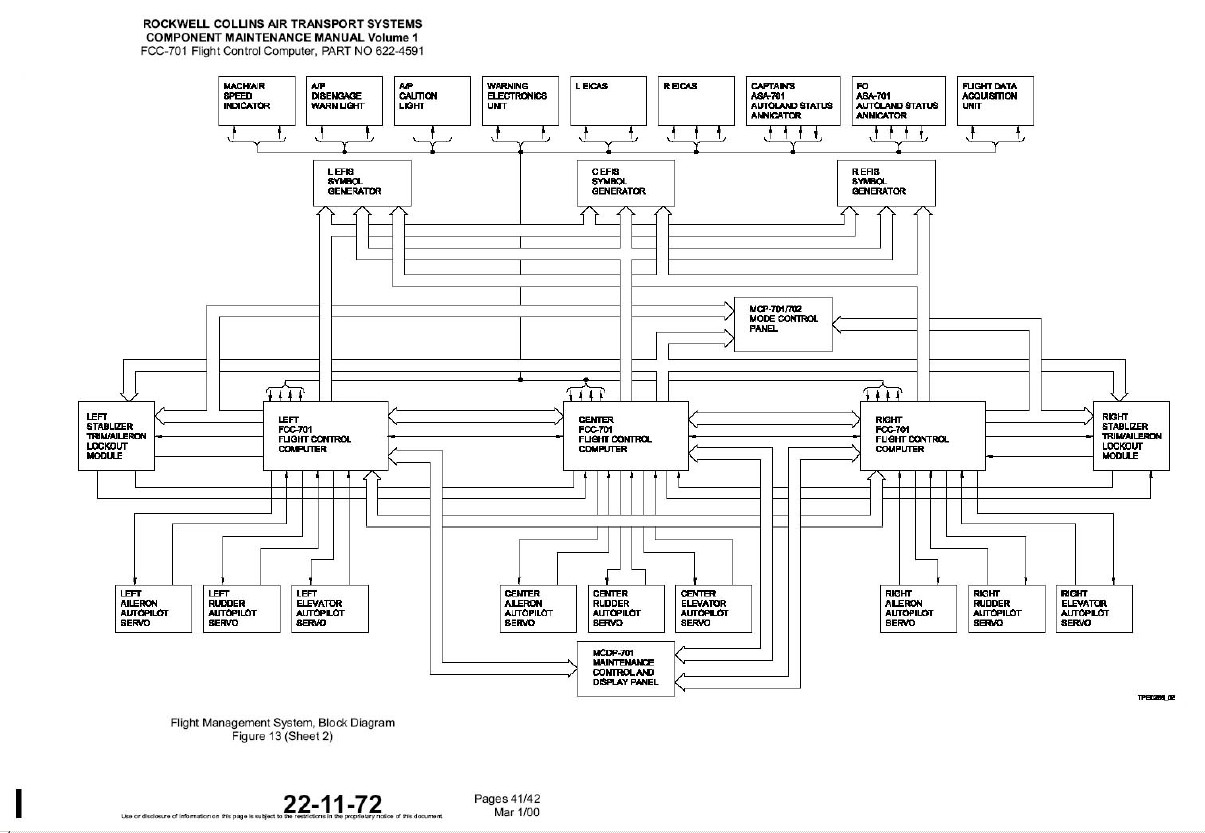
FCC schematic #2
The AFCS modes are as follows: Heading Select, Altitude Hold,
Altitude Select, Vertical Speed, Flight Level Change (FLCH), LNAV, VNAV, APPR(ILS), Backcourse ILS, IAS/Mach
and finally Autoland.
Heading Select - Steers aircraft to heading determined by the
heading select knob.
Altitude Hold - Levels off at current barometric altitude.
Altitude Select - Used in conjunction with other modes (VNAV,
FLCH, Vertical Speed). Aircraft levels off at altitude in the altitude window.
Vertical Speed - Aircraft climbs or descends at the rate
selected, used with other vertical modes.
Flight Level Change - Uses IAS hold function to climb or descend
at a set speed.
LNAV - Aircraft flies a lateral profile as defined by the FMS
waypoints..
VNAV - Aircraft flies a vertical profile as defined by the FMS
using altitude/airspeed constraints (ie 250/10000 - 250 kts at 10,000 ft at X waypoint). VNAV and LNAV share
waypoints.
APPR (ILS) - Automated approach captures ground radio signals
called the localizer and glideslope, which guide the airplane to the centerline and touchdown zone. Used in
conjunction with Autoland.
IAS/Mach - TMC maintains thrust to capture and hold speed in the
Speed window.
Autoland - Coupled with ILS, performs an automatic landing by
auto-idling thrust, auto-flaring and auto-rollout.
If you ever notice an unusually soft landing, especially in bad
weather - rest assured that the airplane has just landed itself. No applause necessary!

AFCS Control Panel
Flight Management System
Enhances the AFCS capability and calculates the most economic
climbs/cruises/descents. Waypoints can be existing waypoints in the aircrafts navigation database or
user-defined. Each waypoint has an altitude and airspeed constraint which the aircraft will meet, if possible.
The system consists of 2 FMCs and 2 CDUs. The FMCs operate either/or, the CDUs can be operated simultaneously,
one for each pilot. There is a lot more capability to this system than I am describing, but the other
functions are not really pertinent to this discussion.
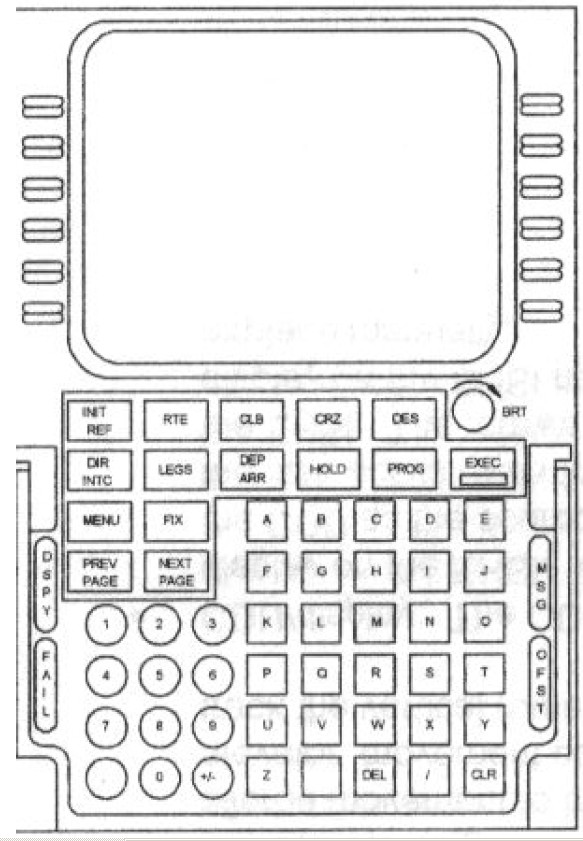

FMS CDU
EICAS - Engine Indicating and Crew Alerting System
The EICAS system is basically the airplanes immune system and
nervous system. It's hard to characterize this system briefly because itís so involved. Basically, itís a
multi-faceted system with 2 main sub-systems: the Engine Indicating portion - and thatís all I'll say about that
because itís completely irrelevant here. The other half is the Crew Alerting System, which could mean not only the
flight crew, but the maintenance crew as well.
EICAS is a very important tool for technicians because of all
the data it can provide as well as displaying hard faults in form of a text messages such as: ZONE TEMP BITE (a
failure in the Pack Zone Controller or its peripherals), or my favorite CARGO DET AIR (a failure in the
Cargo Smoke Detection blowers). Often times, the first indication of a problem on the airplane is an EICAS
message that mysteriously pops up and won't go away.
EICAS is constantly monitoring over 400 inputs real time. It
also can latch faults on powerup. For example, if someone tampered with an autopilot servo (ie cutting the pins on
the electrical connector) - it would display the appropriate message as the aircrafts electrical system is
powered up. EICAS would be a very hard system to defeat when attempting a sabotage. Under normal circumstances
with everything fully operational, nuisance EICAS messages will appear periodically although nothing is
wrong. Itís quite a sensitive system, as a
nervous
system should be.
EICAS information is displayed on 2 CRTs on the Center
Instrument Panel. There are many sub menus and screens available to view specific data on any system.
Another system closely related to EICAS is ACMS. ACMS is
constantly monitoring many inputs and actually will generate ACARS reports and beam them down to the ground in
real time. ACMS receives inputs from every major system on the aircraft.
Not part of EICAS, but this is as good a time as any to talk
about BIT/BITE. BITE refers to the part of a computer that is constantly monitoring itself for faults. Itís usually a
built-in program that can detect faults from within the computer itself or peripherals. After a fault is detected, an
EICAS message is typically displayed. Using the ZONE TEMP BITE message above, the problem could be anywhere in
the Air Conditioning System. So we go down hatch to the Main Equipment Center(MEC) and run a BIT on
the Zone Temp Controller. BIT refers to a test routine that can detect faults during the test, or display
stored faults. A fault code or indication should lead us the culprit. Every major system on the 757/767 has BITE/BIT
capability and interfaces with EICAS. Again, itís getting awfully tough to do a sabotage job without the airplane
detecting it.

EICAS 1 - Lower EICAS Display in Maintenance Mode
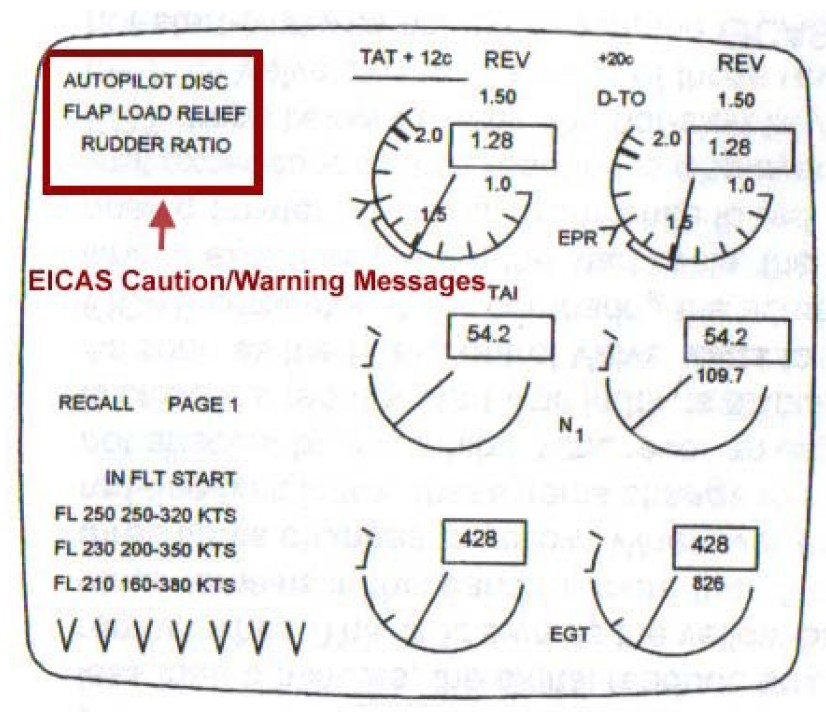
EICAS 2 - Upper EICAS Display
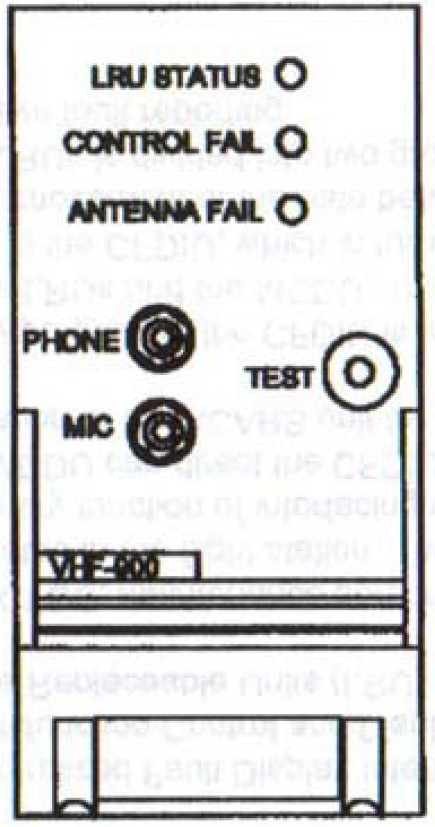
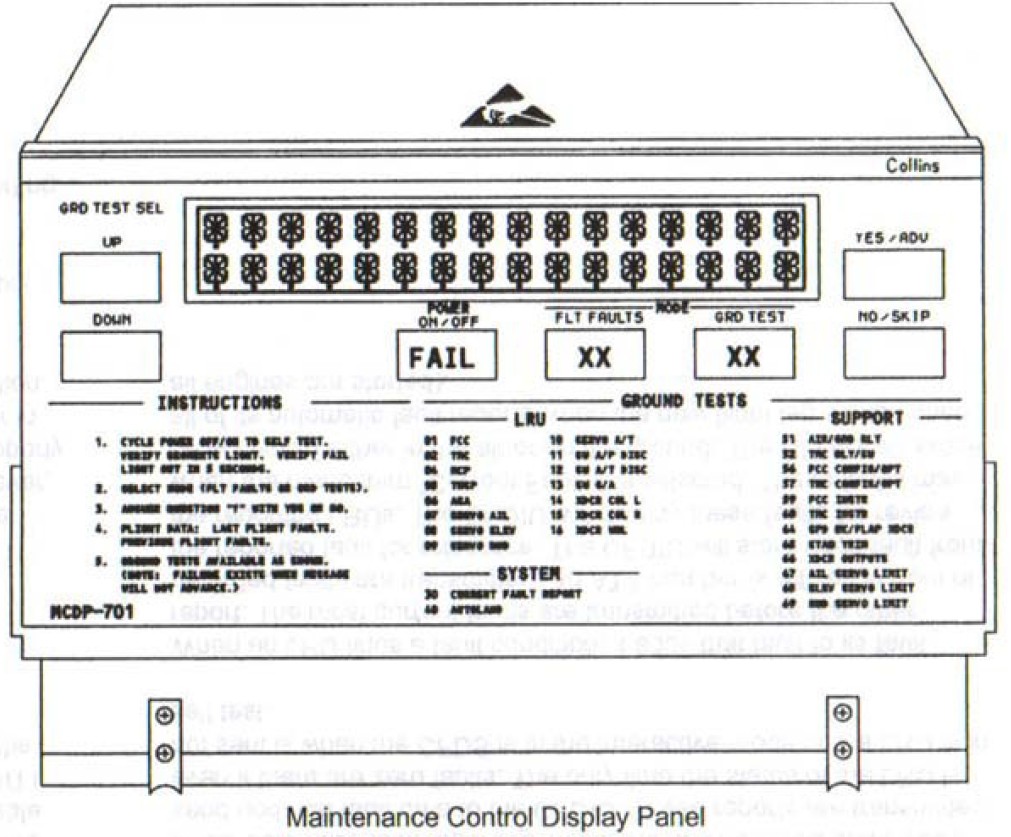
BIT/BITE
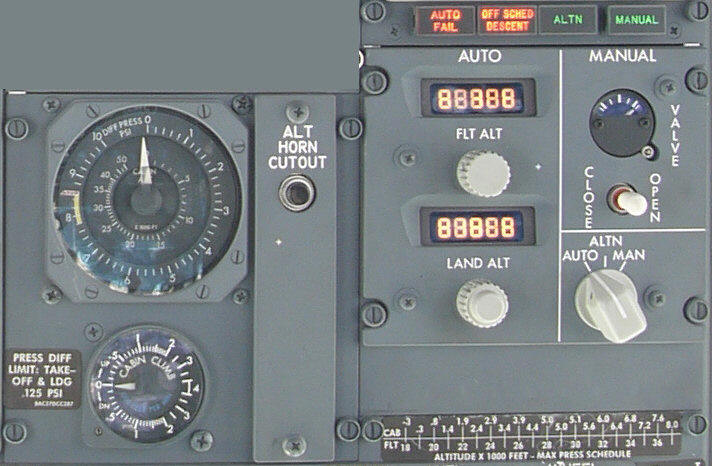
ACARS - Aircraft Communication Addressing and Reporting System
ACARS is a datalink system that uses the No. 3 VHF Communication
radio to uplink/downlink data. Typically, this data consists of nothing more than engine performance data,
gate connection info, weather reports, etc. But the interesting thing about this system is the provision it has
for compatibility with the FMS. An even more interesting thing about this system is the "language" it speaks,
namely ARINC 429. The same language that both the AFCS and FMS speak.
With a wiring, and possibly hardware
modification, ACARS could conceivably take inputs from the ground to steer the aircraft using the FCCs
(Flight Control Computer).
I'll go into this more later on.
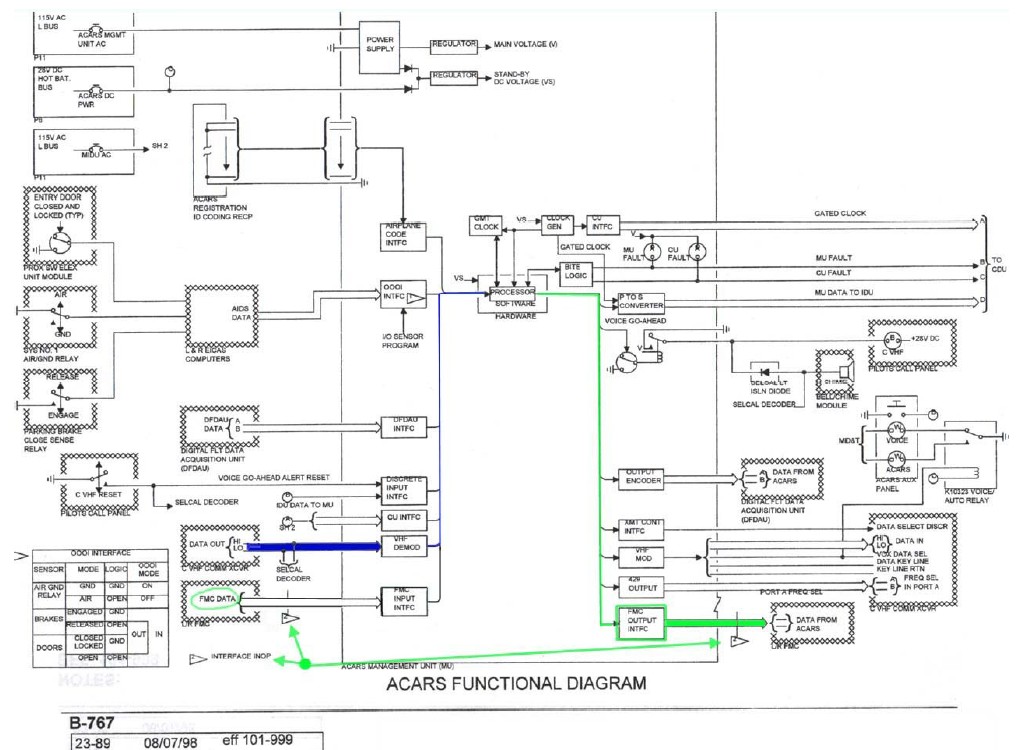
ACARS FMS Provision
Navigation System
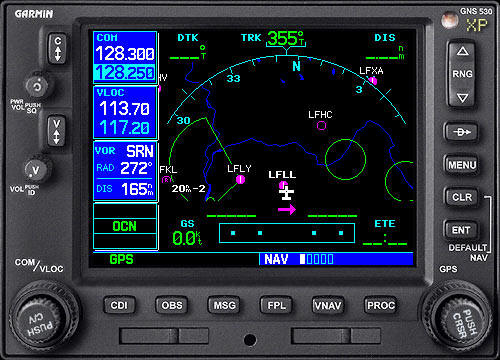 Very briefly. The IRS (Inertial Reference System) system acts as a GPS of sorts, computing
the current aircraft position and heading with respect to either magnetic north or true north. It does a heck
of a lot more than that, but again, the other functions aren't really pertinent so I am going to skip them for brevity.
Altitude and airspeed is computed by the ADCs. The IRS and ADCs are tied into pretty much every system on the
airplane including, of course, the AFCS and FMS.
Very briefly. The IRS (Inertial Reference System) system acts as a GPS of sorts, computing
the current aircraft position and heading with respect to either magnetic north or true north. It does a heck
of a lot more than that, but again, the other functions aren't really pertinent so I am going to skip them for brevity.
Altitude and airspeed is computed by the ADCs. The IRS and ADCs are tied into pretty much every system on the
airplane including, of course, the AFCS and FMS.
A word about IRS. Itís not nearly as accurate as GPS and
wouldn't be a good system to hit a target precisely within 10 meters or so. The minimal error is typically anywhere
from
a hundred meters to 1 nautical mile
or more. The max allowable error changes with the duration of
flight, but it can be as much as 5 longitude minutes and 10 latitude minutes. Also, since the initial position has to
be input at the gate prior to the flight, an error is already introduced before the planes take off. To hit a target
such as the WTC or the Pentagon, you would need to find an alternate position determining system if you were going
to use LNAV for the attack. More on this later.
Flight Controls
Contrary to popular belief, the 757/767 aircraft are
not fly-by-wire controlled. I donít know how
this misconception started, but itís still being put forth by very
reputable aviation sources. Speaking from a susceptibility-to-becoming-a-drone standpoint for a moment, this
is the 757/767s one saving grace as you'll find out later. That is to say, it would at least be somewhat
possible to takeover a FBW aircraft, exponentially more possible than taking over a mechanical beast like a 767. Thatís
right, these airplanes use the time tested principle of hydraulically assisted mechanical (cable and pulley) control.
Lateral Control: There are two main cable systems, a primary and
a backup. They are nearly identical with the difference being that the backup does not run its linkage
through the Feel and Centering Mechanism.
As I mentioned before, there are 3 autopilot servos for the
lateral axis. These are called LCCAs, they differ from the elevator and rudder servos in that they are also used when
not taking autopilot inputs. There is so much "monkey-motion" going on in the roll system, that the LCCAs
actually have to provide a hydraulic assist in normal operation because the amount of force needed to move all
this linkage is quite great. This will be another issue that will come into play later as I go over a specific
type of takeover system.

"Monkey Motion"
Pitch Control: Dual System, not nearly as complicated as the
Lateral Control System. The Captains column controls the left elevator PCA, the First Officers column
controls the right PCA. These two independent systems are normally bussed together, but there is an override system
and either one can control the elevators fully in the event that one fails.
Components: There are a total of 29 hydraulic actuators
assisting the above cable systems and associated linkage (droop mechanisms, feel and centering, lost motion and
overrides). There are 8 aileron PCAs, 6 for the elevator, 12 for the spoilers (these devices are used in roll
assist) and 3 for the rudder.
Hydraulic System
Very briefly. Supplies the juice to the aforementioned 29
actuators at a nominal pressure of 2800 psi. There are different configurations between the 757, 767 and 767ER. But the
basic idea is 2 Engine Driven Pumps (EDPs), 2 ACMPs and an Air Driven Pump. On 767s, there are an additional 2
ACMPs to help the EDPs if the pressure falls too far. During normal operations, all pumps are operational and
sharing the load, but since the EDPs are rated at 37 gpm to the ACMPs 7 gpm, itís fair to say the bulk of the load
falls to the EDPs, this is important later on.
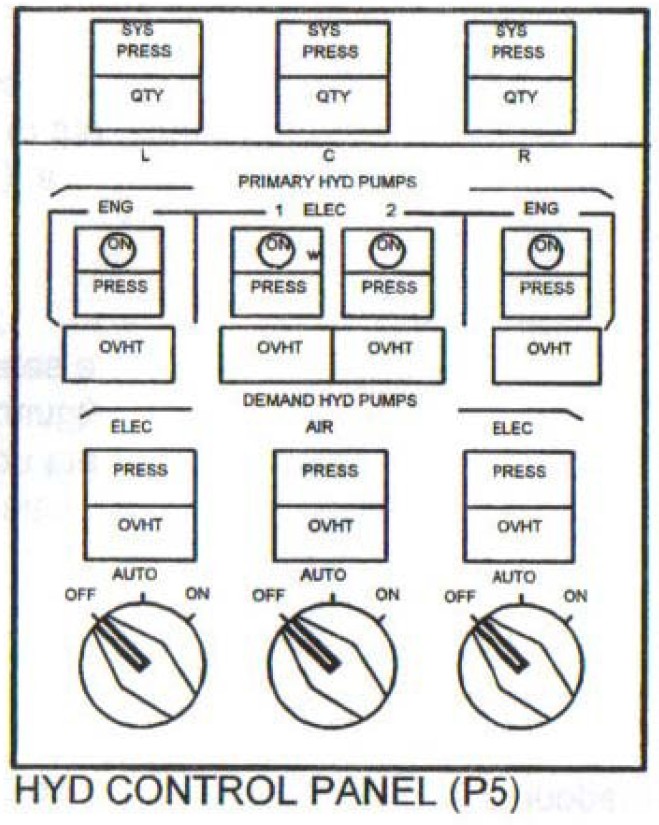
Hydraulic Control Panel
Remote Takeover Overview/Assumptions
Ok, now that you're armed with a basic understanding of the
systems involved, you should have a pretty good idea of the difficulties a remote-takeover plot would encounter.
As I alluded to earlier, the aircrafts defenses from mechanical failure also make great defenses from sabotage. Even
the simplest of modifications would be made difficult and likely rejected by the aircrafts EICAS computers
and onboard BITE [not unless they were modified too]. But, as we'll see, a bigger problem for our saboteurs becomes the ease at which these simple
mods can be defeated by the pilots. As a result, these simple mods will get exponentially more complicated which
makes them even more vulnerable to detection from EICAS, ACMS and human eyes.
Before I go further, lets lay down a few rules to keep this
essay fairly brief. I will be assuming that the modifications can be accomplished in a relatively short
timeframe, [Not necessarily. They could have had
weeks. We need to see the jet repair logs.] short enough that UA or AA wouldn't know about them, which is already making a HUGE assumption because
aircraft are hardly ever left unattended. Commercial airliners are not automobiles. They need daily
maintenance due to their complexity and sheer number of parts that can (and do) fail. Much of this maintenance is done
overnight between the last flight and first flight of the next day. MCOs, or Maintenance Carry Overs, are cleared if
there is time. Any non-routine items are cleared from the ships logbook (and additionally the cabin discrepancy
log). There is also typically one or more routine checks performed overnight. These checks can be in the form of
transit checks, pre-departure checks, layover checks and ETOPS reliability checks. Aircraft already down for
heavy maintenance are worked around the clock, 7 days a week. There may be a brief instance where an aircraft
is left unattended, perhaps when maintenance is complete and the aircraft is waiting to be towed or taxied to
the departure gate for its next flight - this is usually no more than a few hours, sometimes a lot less.
I'll be assuming away
heavily modified aircraft that have essentially been re-designed. As we'll
see later, this type of modification would have to be a very, very involved. UA/AA
Line Station mechanics would be finding strange new parts where they don't belong, etc. Another thing,
the aircrafts down time would be documented by numerous ship tracking records, maintenance records, servicing
records as well as the aircrafts logbook, and as far as I'm aware - none of the 4 9/11 aircraft had an extended
downtime for months prior to the attacks. If the aircraft were re-designed in lieu of their scheduled heavy maintenance
checks, months (or years) in advance of the attacks, all this new equipment probably would've been spotted by the
second day out of the hangar. It certainly would've been discovered after months. Enough said.
Another thing I won't go into is sleeper agents who might have
assisted the ground operation. [Covert agents could
have been planted. We need to see original ground crew personnel logs.].
I can't see how anyone would sacrifice their lives for the operation.
Technically speaking, thatís getting close to suicide hijacker territory anyway. If you can find one sleeper for each flight,
surely you could find 4 for each. Now things would start to resemble the "official story". No need for robojets.
I will also not entertain any exotic theories such as pilotless
flights. Any airline worker knows of the interactions between the pilots, gate agents, dispatch and cabin crew prior
to boarding. Pilots also have to make those announcements and brief the flight attendants prior to pushback.
I could go on, but the idea is so ridiculous itís not worth going over in depth.
With all that out of the way, lets start looking at some
scenarios. I will introduce a scenario, go over what the modification would entail, then I will outline the ways the
pilots can defeat the system, which will lead to further modification, hence, another sub-scenario and so on and so forth
until no viable takeover options are left.
Scenario 1: Autopilot - Used In Conjunction With ACARS And Other
Systems Already In Place
This scenario involves modification of the ACARS system to be
able to input to the autopilot FCC's as well as the FMS computers, which will give ground controllers the ability to
fly the airplane by properly formatting ARINC 429 data words and uplinking them. The ground setup would be
elaborate, possibly involving a full motion simulator to generate the ARINC data. The ground controllers
could then uplink FMS waypoints and have the airplane fly an LNAV/VNAV flight plan all the way to their
respective targets. The modification would also have to null the pilots corrective AFCS inputs or disconnect commands
once the takeover started, this would be more difficult than it sounds. Another thing, the pilots moving the
Stabilizer Trim will disconnect the AFCS, so that will have to be modified somehow. Stabilizer Trim cannot be
disabled without Stab Trim Control Module/EICAS/FCCs/MCDP/Stab Trim Position Module or the pilots
noticing. So, the only option here would be to remove the Stab Trim discrete to the FCCs, but the FCCs
internal BITE would notice, and trigger an EICAS message. In addition to Stab Trim, merely applying force to the
Control Column will disengage the Autopilot (another FCC discrete), so that will have to dealt with
as well.
That said, this wouldn't be very effective anyways. Even
uplinking precise lat/long/speed/alt waypoints to the FMC would be a problem because of the inaccuracy of the IRS
system, which could in error by hundreds of meters as I mentioned above. The WTC Towers were 208' wide, a
767 has a wingspan of 156'. Thatís not a lot of wiggle room, the lateral error can be only 10 meters maximum for
this to work. The error in the IRS system would make the autopilot takeover scenario a terrible idea. A
new position computing system would be required for this and other similar scenarios.
[A homing beacon planted in the WTCs and Pentagon would
assist accurate targeting. Paul Bremmer's company, Marsh & McLennan was the only
company hit in WTC 1.]
It is possible that GPS position data from the aircrafts
Enhanced Ground Proximity Warning System (EGPWS) could be used, if installed. I'll make a couple of assumptions
here. First, that UA/AA 757/767s were fitted with EGPWS in 2001. It's certainly not a given because, as of 2005,
EGPWS mods were still being performed at my airline for the 767. The second assumption is that this GPS data
is accurate to a few meters, and can be used in place of IRS without EICAS detecting loss of IRS information to
various systems; this is quite an assumption actually. I'll explain; referring to the IRS Block Diagram
below, we see that position information to the FCCs and FMCs are provided by 2 separate ARINC data busses.

IRS Functional Block Diagram.
What does this mean? It means that all the systems getting fed
IRS data on these busses (TMC, Weather Radar, Yaw Damper, GPWC, RDMI ) will now be getting GPS data, which is
quite different in format and content from the IRS data. This would be one of the biggest hurdles for our
saboteurs. [Not with a homing beacon.] To give you an idea of how difficult this might be to modify, I need only tell you of my experience
installing IRS on aircraft not yet fitted with it. Just installing and reworking wiring harnesses totals about 400
man-hours, thatís with an overhaul aircraft already "torn down" with equipment racks removed. The total for an IRS
upgrade is about 1,200 man-hours. Our saboteurs would have to keep the modification to a minimum, so
only the FCCs, FMCs and CDUs need to be given GPS data. But there is a catch, the data between these
devices and the devices still getting IRS information would be in disagreement as all these computers are constantly
cross-talking. I have no idea how this could be resolved without using GPS on every system as I mentioned above.
If all of that can be resolved, we now have an airplane that can
hit a target remotely within a few meters laterally, and altitude isnít really a factor in the WTC attack flight
plan. For the Pentagon, the altitude would be more tricky because the building is only 77 feet high, that gives us an
error margin of +/- 38 ft. However, altitude data from the ADCs is very accurate, easily within 50 feet and possibly 20
ft or better, so the Pentagon is not a stretch either assuming the autopilot can fly the profile tightly at 500 mph.
The problem for our saboteurs is the ease at which this system
can be disabled by the crew, in a variety of easy ways.
[Not if they were asphyxiated and unconscious]
Keeping in mind that the flow of control would be:
Ground->ACARS->FMC->FCCs->Autopilot Servos....Any one of these will work:
- Pull the FCC circuit breakers (3 places). This will give
pilots control of the airplane by pulling power to the autopilot computers.
- Pull the FCC Servo Power circuit breakers(3 places) . This
will remove power from the autopilot servos.
- Pull the ACARS MU circuit breaker(1 place).
- Pull the FMS circuit breakers(2 places). This will stop the
ARINC data from entering the FCCs.
- Isolate the Left and Right Main AC Busses, and switch the
Generator Control Switches "off" one at a time, until control is regained. (ACARS is powered by the L AC bus) Autopilot
can still be used.
- More drastically, the crew could opt to drop both AC busses
offline and fly on Standby Power. This would kill ACARS but not the FCCs or FMS. Same effect as above.
It could be argued that all these breakers can be interlocked by
simply cutting the wiring going from the breaker to the FCC's/FMCs/Servos and supplying new wiring, possibly from
a nearby terminal strip or circuit breaker on the same bus. But I'm not really sure that would make a
difference, considering the last 2 options above, and I donít know how the new feeding breakers would take the extra
load. They'd probably open (pop).
However, lets assume for a moment that our saboteurs are really,
really sharp and modified ACARS, the FCCs, and FMCs to receive power from all busses, including the Standby
DC bus. Again, a major assumption on many counts. The biggest being that this may sound easy, but I assure
you, it would take 2 men the better part of 12 hours to do it (if it's even possible). Then that pesky EICAS, as
well as on-board BITE, might figure out that something is up because you've changed the power supply inputs.
All that aside, pilots can
still
defeat the system quite easily.
- Start pulling every circuit breaker in the flight deck, until
control is regained. Or...
- Switch both Generator Control Switches "off", Switch the
Standby Power Selector to "off", Switch the Battery "off"
The latter halts every moving electron in the aircrafts wiring.
There will be side-effects to such drastic measures. Specifically, no control over pressurization or air
conditioning; this might be a bad thing at altitude, but not catastrophic. Limited engine control, but nothing too major. No
operative fuel pumps, not disastrous because thirsty engines can be suction/gravity fed. Most of the
hydraulics will still be working, the EDPs pull most of the load anyways. Since the airplane is cable driven, there will be
no control problems. So we have: 2 working engines, 2 working hydro systems, and functioning flight
controls - that's enough to limp home with.
The problems I mentioned above won't be devastating if the crew
descends quick after killing power. Hypoxia would not be an issue, at all, because whatever position the
Cabin Outflow Valve (pressurization control valve) was in prior to loss of power, would be where it stays when
power is removed. So cabin pressure wouldn't change until a descent started. At that point, this is where the
Negative/Positive Pressure Relief Valves come in. These devices will dump excess negative/positive pressure before
dangerous pressure levels are reached. These valves have no electrical connections, they are fed by pressure sensing
lines and operate mechanically.

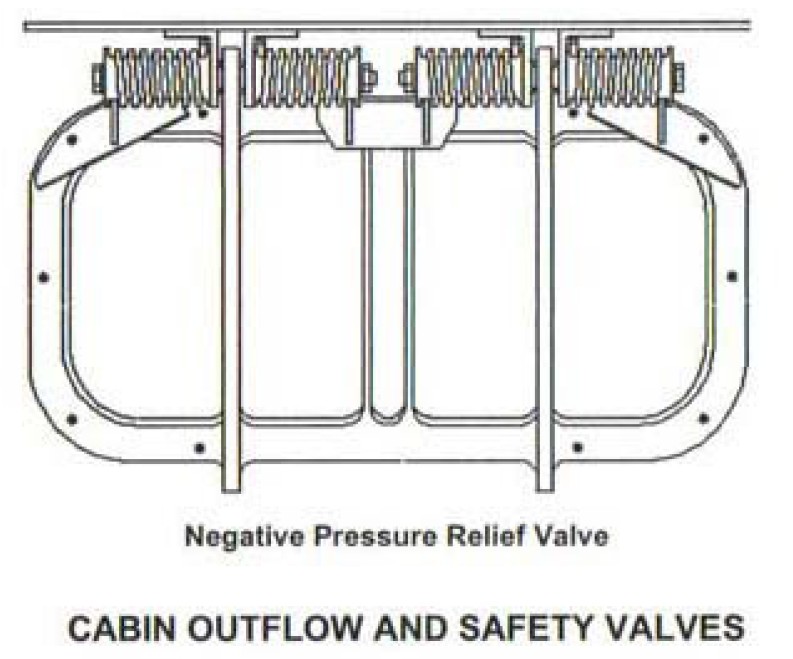
Relief Valves
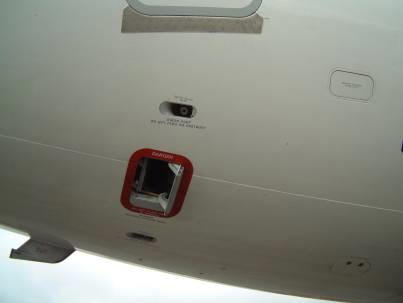

The engines on 757/767s are FADEC, which means they are
essentially fly-by-wire engines. No mechanical linkage goes from the flight deck to the engines for control, it
is all electronic. So how are we going to control the engines with no power....? Well, the engines EEC's still have
power because they have their own power supplies, which can't be turned off (as long as the engines are turning).
Itís almost like these airplanes were designed to be robo-proof !
Now, if you are thinking that I can't possibly be correct about
killing all electrical power and still being able to fly the airplane, there is a precedent.
http://www.ntsb.gov/ntsb/brief2.asp?ev_id=20001211X11596&ntsbno=MIA99IA046&akey=1
[Shutting off the electricity was
not necessary with Scenario 3.]
On December 15, 1998, about 1216 eastern standard time,
a Boeing 737-232, N327DL, registered to
Wilmington Trust Company Trustee, operated by Delta Air Lines Inc., flight
2461, as a 14 CFR Part 121 scheduled domestic passenger/cargo flight,
experienced a reported total loss of electrical power on approach for
landing at Orlando International Airport, Orlando, Florida. Visual meteorological
conditions prevailed and an IFR flight plan was filed. The airplane sustained minor damage. The airline
transport-rated pilot-in-command (PIC), first officer (FO), 3 flight attendants, and 51 passengers reported no
injuries. The flight originated from Boston, Massachusetts, about 3 hours 16 minutes before the incident.
...
The airplane
experienced a total loss of electrical power as the gear and flaps were
extended. The APU did not start, and the battery indicated between 17 to 18 volts. The
normal checklist procedures were accomplished followed by the quick reference procedures.
Electrical power was unable to be restored.
A go-around was initiated to continue the checklist.
All communications and electrical equipment
failed
...Inspection of the battery revealed that the individual
cell electrolyte levels were not visible
and the battery was fully discharged.
This 737 limped home with no power, not even a battery. As far
as I know, this is a one-of-a-kind incident, and the odds of losing all electrical power is worse than losing
both/all engines, which has happened a few times.
This about wraps any case for using existing internal guidance
to takeover the aircraft. It's too easily defeated and the sabotage would probably be detected by BIT/BITE/EICAS or the
mechanics themselves long before the takeover could take place. Overall, a bad idea unless itís
augmented by taking the pilots of the equation.
Scenario 2: "Foreign" Takeover System
I was almost not going to talk about this because, frankly, it
would take way too long to install [Agreed] (going outside the original premise of this essay) and would easily be detected by
maintenance as well as the aircrafts defenses. But, since this is what everyone envisions when they hear or read the
words "drone" or "remote control" - I think I need to briefly outline the major problems with this scenario.
The first thing that comes to mind is power. Is this system
going to use the existing electrical system, or supply its own power? How involved would it have to be? What sort of
guidance would be used? How will it physically take control of the airplane; will it use its own AC (or more
likely DC) servomotors or will it use existing autopilot servos? Where will this new equipment/wiring be installed to
avoid easy detection?
I should just move on to the next scenario because this one is
already deteriorating fast. We aren't talking about a NASA/USAF test bed here. We're talking about 4 civilian airliners
in scheduled service, that get regular maintenance checks and servicing as well as non-routine
maintenance. But imagining for a moment that visibility isnít an issue, lets take a look at the most likely scenario and
see what it would take to even install this system, and how it quickly becomes very a involved chore requiring a
complete teardown and redesign of the flight control system.
Power: As described above, power can be removed easily from
any/all systems on the airplane. This leaves us with 2 options for power in this system.
1) Connection to the Hot Battery Bus.
2) "Foreign" Power Supply which cant be turned off from the
flight deck.
Option 1 may seem attractive to our saboteurs, at first glance,
for several reasons. Despite the pilots ability to simply switch the Battery "off", the Hot Battery Bus remains
powered as long as the Battery has a charge; ergo, anything powered by this bus cannot be shut off. Also, use of
the aircrafts battery would preclude the need for a "foreign" power supply that would certainly be detected. But
there are major problems with this approach. On 767s, there is access door to the Main Equipment Center (MEC)
just behind the cockpit. All a pilot would have to do is pull up the carpet, remove the door, descend down the
stairs and the battery would be looking right at him. It's the easiest thing in the world to disconnect, just a single
turn of the wrist will do it, no tools necessary. The bigger problem here is the batteries short life expectancy. Itís
supposed to wield 30 minutes of emergency power if the aircrafts AC fails. However, that estimate is under
normal circumstances, operating in Standby mode supplying units with relatively low amperage requirements.
Autopilot servos (or worse, foreign servos connected to the flight control linkage) would demand a lot of amperage
from the battery and quickly kill it. Why? Earlier, in describing the Flight Control System, I pointed out the fact
that the amount of force needed to move the cables in the Lateral Control System is so great that the LCCAs have to
assist the pilots control inputs during normal operation. The foreign roll servos would "smoke" the battery
before the aircraft could even plot a course towards its target. Clearly option 1 wont work.
Option 2 is really no better. It would either consist of a
generator or an array of batteries. Where will these go? Forward Equipment Bay? No room, and someone would notice. MEC?
Someone would definitely notice (and really no room). Cargo Bays? Someone would notice. Wheel wells?
You guessed it - no room and someone would notice. The only other place would be the jackscrew
compartment, which the most spacious area in the airplane apart from the cabin. But, since this area is so
spacious, the batteries would stick out like a sore thumb. Also, since this area isnít pressurized, the extremely low
temperatures would really limit the batteries output. Wherever they went, they would be easily visible and the
installation of power/control wiring to the servos would be
quite an
undertaking, I'll leave it at that.
Servos: As I mentioned, there are 2 options.
1) Use the existing autopilot servos (there are 9) and route
power and control wiring to them from our foreign batteries.
2) Use "foreign" servos.
The first option would seem to be the way to go. However, itís
not clear just how much battery juice they'd need. The autopilot servos would drain power fast, but if the ground
"pilots" kept the controlling to a minimum, they might be able to get away with it using enough batteries. The
installation of wiring from the batteries (wherever they wound up) would be a nightmare. To get wiring all the way
back to the elevator and rudder servos, every ceiling panel would have to be dropped and wiring would have to
be run the length of the fuselage, through the Aft Pressure Dome on back to the jackscrew compartment, and to
the servos. By using a relay, you could keep the servos from draining the batteries during normal operation prior
to takeover. This may also help fool EICAS, as it wouldnít be able to detect the batteries through the power wires
while the relay contact was open. The major problem with this scenario is that it wouldn't work as a
standalone system because the pilots could still interfere with the takeover system by commanding autopilot servo inputs
from AFCS panel, or manually moving the control columns which will disengage the autopilot servos,
giving control back to the pilots. This is a built-in safety feature on commercial airliners which prevents a renegade
autopilot from causing a disaster. Our conspirators would have to sabotage all existing AFCS disengage
mechanisms...without the FCC BITE/MCDP/EICAS or the pilots knowing about it. I guess itís
option 2 then.
Well, maybe not, because option 2 is probably impossible. 3 big
problems. First, as with the batteries, you need to find a suitable place for these devices. Here's the catch, you
have to use the existing flight control cable paths and that really narrows the locale down. Off the top of my head, I'd
say 90% of the cable runs are unusable due to proximity of other cables, devices, ceilings, floors, etc..
Then, as with the batteries, you're installing more foreign components for the mechanics to find. If all that's not bad
enough, these devices can be overridden by the "stock" servos or manual control column inputs so our saboteurs would
still have to be modify existing systems in addition to installing new systems. This is why I said earlier
that a complete redesign would probably be the way to go. There is just no easy way to do this....
Control: This scenario is pretty much shot, so control and
guidance wouldn't really matter! It would be the easiest part for sure. A transmitter, a receiver, optical guidance(video
camera). Pretty straightforward and easier to hide, and easier to install than half a dozen 28 volt batteries or
servos, for sure.
 Scenario 3: Scenario 1 With Sabotage Designed To Disable Crew
Scenario 3: Scenario 1 With Sabotage Designed To Disable Crew
Pressurization Control Inhibited/Sabotaged
This is a variation of the first scenario I described, with the
only difference being an attempted sabotage to disable the pilots before they could regain control. There are a couple
of ways to do this:
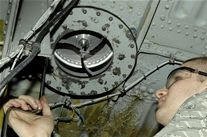 - Sabotage the Pressurization System to incapacitate the
passengers and crew.
- Sabotage the Pressurization System to incapacitate the
passengers and crew.
- Release Nerve Gas or some other chemical agent that would
disable the crew.
Sounds easy, but is it?
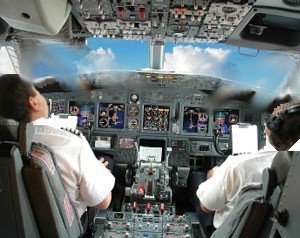 As far a tampering with the Pressurization System, good luck. I
didnít talk about this system above but I'll outline it briefly now. There are 2 Pressure Auto Controllers which can
be selected either manually or automatically. The Cabin Outflow Valve receives open/close commands from the Auto
Controllers and regulates pressurization by modulating a door. If a Controller fails (there are a multitude
of fault conditions), EICAS will display the warning "CABIN ALT AUTO 1(2)", the system will then switch over the
backup controller without any pilot input. Should that controller fail, a "CABIN AUTO INOP" message will be
displayed by EICAS. Even if cabin altitude rises without a fault being detected, an aneroid switch in the
system will activate at 11,000' cabin altitude, and command the Cabin Outflow Valve closed, halting the loss of
pressurization. Should this fail, there is a backup DC system which commands the Outflow Valve directly from a
selector switch on the Pressurization Control Panel in the flight deck. There is also an Altitude Switch that
activates a red "Cabin Altitude" warning light, a red "CABIN ALTITUDE" EICAS warning message, which is accompanied by
a steady aural tone - this happens at 10,000' cabin altitude. There are also Outflow Valve position
and Cabin Altitude indicators in the flight deck. As you can tell,
the pressurization is a redundant system and would
be extremely difficult to sabotage. However, even if successful in defeating this system, the pilots would
merely don their Protective Breathing Equipment masks which supply oxygen.
NOT IF HIJACKERS PREVENTED THEM
As far a tampering with the Pressurization System, good luck. I
didnít talk about this system above but I'll outline it briefly now. There are 2 Pressure Auto Controllers which can
be selected either manually or automatically. The Cabin Outflow Valve receives open/close commands from the Auto
Controllers and regulates pressurization by modulating a door. If a Controller fails (there are a multitude
of fault conditions), EICAS will display the warning "CABIN ALT AUTO 1(2)", the system will then switch over the
backup controller without any pilot input. Should that controller fail, a "CABIN AUTO INOP" message will be
displayed by EICAS. Even if cabin altitude rises without a fault being detected, an aneroid switch in the
system will activate at 11,000' cabin altitude, and command the Cabin Outflow Valve closed, halting the loss of
pressurization. Should this fail, there is a backup DC system which commands the Outflow Valve directly from a
selector switch on the Pressurization Control Panel in the flight deck. There is also an Altitude Switch that
activates a red "Cabin Altitude" warning light, a red "CABIN ALTITUDE" EICAS warning message, which is accompanied by
a steady aural tone - this happens at 10,000' cabin altitude. There are also Outflow Valve position
and Cabin Altitude indicators in the flight deck. As you can tell,
the pressurization is a redundant system and would
be extremely difficult to sabotage. However, even if successful in defeating this system, the pilots would
merely don their Protective Breathing Equipment masks which supply oxygen.
NOT IF HIJACKERS PREVENTED THEM
To summarize, our saboteurs would have to:
- Modify both Auto Controllers to open the Cabin Outflow Valve
through an input signal and defeat the internal fault detection circuitry. This mod would be done at circuit
card level. This would be a very involved modification as the internal BITE would have to be disabled or
heavily sabotaged in addition to the fault detection circuits. Even if that is possible, how would EICAS/ACMS react
to this? Would EICAS have to be sabotaged too? Another problem here is time. The Auto Controllers are nice
culprits for any pressurization EICAS messages, as such, they get removed/replaced quite often. Just
removing one of these in the time interval from modification to takeover will negate the sabotage.
- Disable the aneroid switches without the controllers internal
BITE detecting this. These switches override anything happening within the controller, and their single job
on the airplane is to shut the Outflow Valve if 11,000' is reached.
-Disable the Manual DC system. Tampering with the selector
switch might do, but the units self test might fault the Controller, displaying an EICAS message. Simply disabling
the DC motor on the Outflow Valve wouldn't work either because the pressurization BIT would find the fault
and EICAS would, once again, foil the plot. There really isnít much more to the DC system outside the selector and
the DC motor. The only option here would be a relay designed to open the circuit when energized. Add it to the
list of things that need to be installed/modified.
- Disable the Cabin Altitude Switch, the Cabin Altitude
Indicator/Cabin Rate Indicator and the Outflow Valve Position Indicator so the pilots will be unaware of rising cabin
altitude. This is just as important as above, because the pilots will simply don their masks if cabin alt reaches
10,000'. However, I'm going to go out on a limb and say that these really cannot be tampered with because the sabotage
would affect normal operation and the unit would simply be replaced after the first flight. In addition, EICAS
and the Pressurization BITE would certainly detect the inoperable gauges, so the unit (Pressurization Indicator Panel)
would never fly in the first place.
Even if the sabotage is somehow successful overriding all these
fail-safes without EICAS or BITE knowing about it (I'd like to re-iterate, that I'm assuming this is possible -
it likely isn't), the pilots can still don their masks as they feel the onset of hypoxia, they are trained to know the warning
signs especially in the wake of the tragic Payne Stewart(RIP) case. There is also a Passenger Oxygen System that
uses oxygen generators, this is tied to a 13,500' Aneroid Switch will drop the masks automatically, the pilots can
manually drop them as well.
There are a couple of instances recently where a catastrophic
failure of the pressurization system occurred, resulting in a loss of consciousness of the flight crew. The
result of both failures tragically led to deaths of everyone onboard the 2 aircraft. The first case is Payne
Stewart's Lear jet. Needless to say, a Lear jet is nowhere near as complex, automated, or redundant as a 767 in regard to
the Pressurization System. The second instance was Heilos Flight 522, a 737-300. While the 737's Pressurization
System may be more similar to a 767s than a Lear jets, itís still nowhere near as redundant. There is only 1
Auto Controller which controls both the Auto and Standby modes. The Manual DC mode works the same way the 767's
does. What the 737 doesn't have is: a backup Controller, auto switching, a comprehensive BITE/fault
detection circuit within the Auto Controllers, EICAS, aneroid switches to close the Outflow valve should both
Auto Controllers fail or a "smart" Pressurization Control Panel capable of BITE. This does not make the 737's
Pressurization System unsafe, at all, it's still a very capable system. Itís just that 757/767's were designed for
long-range, overwater operations (ETOPS) and need the extra redundancy for certification.
Overall, the pressurization sabotage is a terrible idea, if itís
even possible. Even if successful, there is no way to know how the flight crew would react in response. Maybe in
addition to all the above, the saboteurs can remove the oxygen tanks and replace them with gas? Who knows, but the
Crew Oxygen tanks are tested (actually breathed from) regularly as well.


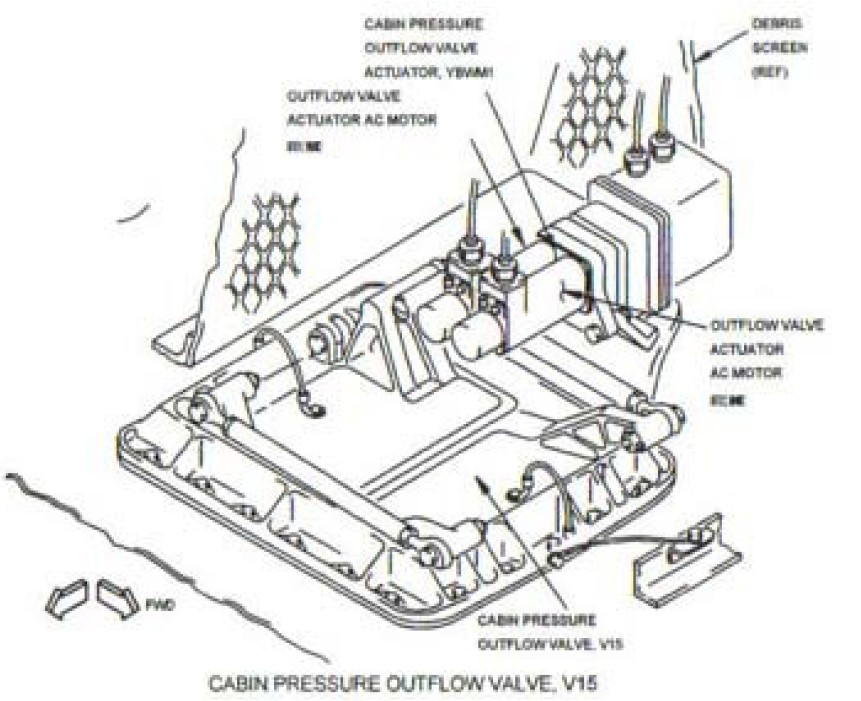
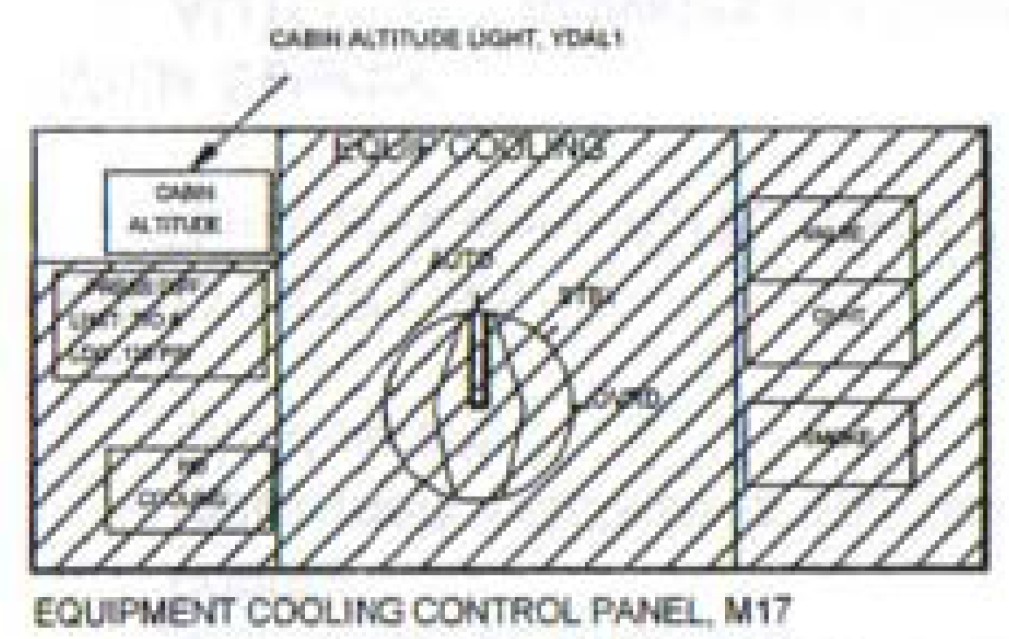
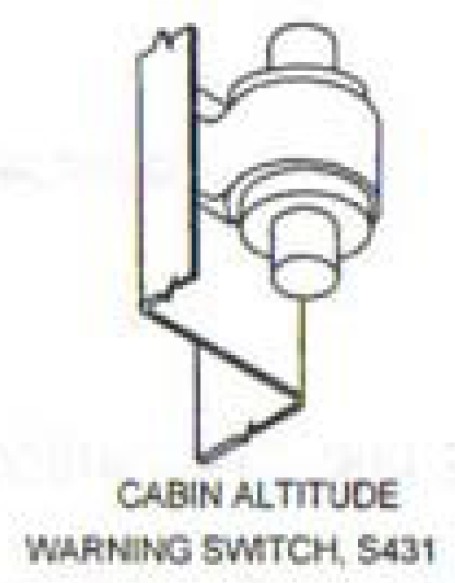
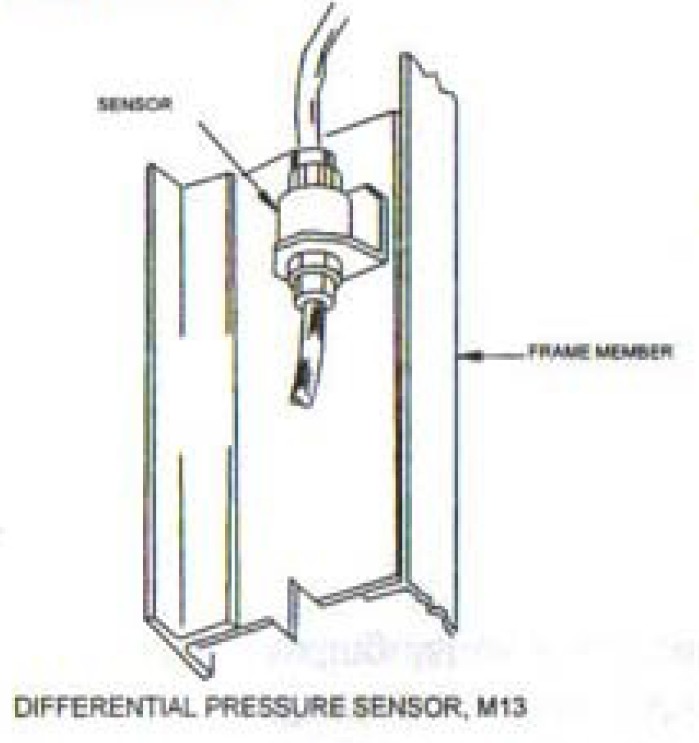
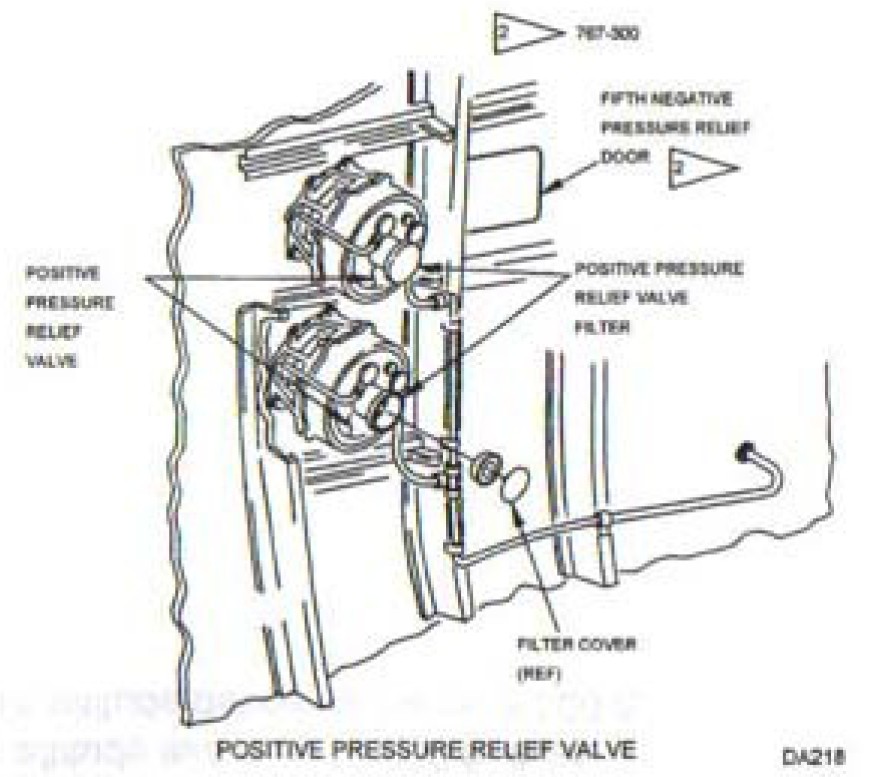
Cabin Pressure Components
Nerve Gas Released
This may be a more attractive idea, but how would it be
accomplished? [Gassing is possible, but suffocation is
simpler.] How much gas would be needed? How would it released? Where on the aircraft would the gas canisters
be stored? Does the aircraft have defenses for this too?
The only way it would be effective, was if it was released in
the Air Conditioning System ducting. Otherwise, it would be local and wouldnít likely be terribly effective,
eventually getting vented overboard. The aircraft is constantly recycling air; venting 50% during any air "cycle".
This means the gas would need to be released with a sufficient quantity and it would have to be potent. Again, as
with the above scenario, the pilots have a defense - their oxygen masks as well as smoke goggles. These oxygen tanks
would have to be removed and replaced with tanks containing an agent that will incapacitate a pilot. Also,
due to frequent mask checks - these tanks would've needed to be replaced overnight, just before the attack. Why
cant you just release all the oxygen? EICAS monitors the pressure through a pressure sensor on the tank.
So where exactly should these gas canisters be installed? My
best bet is in the flight deck ducting. Since there are many ducts leading to different zones on the airplane, the air
tends to be very local so gas released in the mid cabin would not likely find its way to the flight deck. To able
to do this, the ducts would have to be opened up and the canister placed in such a way that it doesnít move around,
perhaps fastened with velcro. Why cant you just place the canister randomly in the cockpit? Easy, the pilots
would see it.
Does the airplane have defenses against this? Of course it does!
Smoke in the cockpit is a major concern in aviation, so there are systems in place to deal with it. The
Equipment Cooling Override/Smoke Clearance Valve can suck the smoke out of the Flight Compartment, as well as the
MEC, and vent it overboard. This would also have to be disabled: good luck in not having the Equipment
Cooling BITE and EICAS detect the sabotage.

Smoke Clearance System
To sum up, this approach requires
- Replacing the pilots Oxygen with some other agent.
- Install remotely operated canisters to release gas in the
flight deck.
- Disabling the Smoke Clearance System
Sounds easy enough, but I'll refer you to scenario 1 to get an
overall picture of this approach - still many problems. Also, thinking this through, I just donít see it
happening. First, the gas would be released. Naturally the pilots would don their masks. However, they would surely be
aware that they were breathing something other than oxygen, and would retreat from the flight deck. Is this
enough? Well, no. There are PBE oxygen tanks, as well, that the pilots could use and retake the cockpit. There
are between 10-15 of them depending on the aircraft, so our saboteurs would have to rig these as well. Merely
removing them or releasing the contents wouldnít do, as these are checked for availability and pressure frequently.
Also, the gas canisters contents would eventually be vented overboard by the ventilation/re-circulation system, so
the pilots would still have time to retake the flight deck(they'd have between 20-40 minutes) even if all the PBE was
sabotaged.
Even if the pilots couldn't retake the cockpit right away, they
COULD make their way down to the MEC and start removing boxes, once they removed the 3 FCCs - the airplane
would be free from ground guidance. The pilots could then theoretically take turns at the controls holding
their breath, while wearing their smoke goggles to protect their eyes from the gas. This may sound silly but itís
better than crashing.
Overall, I really donít buy the "helpless crew" theory.
Raytheon and JPALS
Looking into the "remote drone" theory in regard to 9/11, I
happened upon an interesting claim. The claim is that a new remote control system is currently be tested by the Air
Force and Raytheon and has made pilotless flight possible. Is this claim accurate? From Killtown's Smoking Guns:
Raytheon and the U.S. Air Force successfully
auto lands a pilot-less FedEx Boeing 727 six
times at Holloman AFB, NM using a military GPS landing system
that will enable ground control to take control
of a hijacked airplane and force land it.
http://killtown.911review.org/oddities/2001.html#August25,2001-Raytheon
This is completely incorrect. I took the liberty of reading the
press release from Raytheon and
nowhere
does it mention a pilotless
727 or "remote control".
Here is where the confusion arises:
...The FedEx Express 727-200 aircraft at Holloman successfully
conducted a total of sixteen Category I approaches. After
completing a number of pilot flown approaches
for reference the aircraft conducted
six full autolands using the
JPALS ground station....
http://www.prnewswire.com/cgi-bin/micro_stories.pl?ACCT=149999&TICK=RTN&STORY=/www/story/10-01-2001/0001582324&EDATE=Oct+1,+2001
The aircraft was not pilotless, it merely flew an automated
approach and landing. Most people are quite ignorant of aviation and this is a example of how nonsensical claims
arise and later mutate. This is not a super-secret system being used to turn commercial aircraft into drones, it's
merely a replacement for the aging ILS system already in place. Itís called JPALS and it uses GPS for approach
guidance instead of ILS, which uses radio signals. The FAA has already been developing similar systems to
JPALS; WAAS(Wide Area Augmentation System) and now LAAS (Local Area Augmentation System) will be
the way forward. WAAS will be a replacement for the VOR/NDBs systems which are used in enroute
navigation. LAAS will used for approach guidance and will replace ILS.
In addition to a slightly misleading Raytheon press release,
apparently
Der Spiegel has
perpetuated the claim by insinuating that this system can be used to free an aircraft
from a hijackers control.
(TRANSLATED): "A forced landing system developed in the USA will
make plane hijackings more difficult: in case of emergency the crew operates a switch - and the machine
steers automatically to the next airport. The times for an airplane kidnapper are becoming harder: in
America engineers are working to land kidnapped machines in the future by an improved autopilot without
assistance of the cockpit on the nearest airport - an emergency switch, that a ground control operates crew; the
levers in the airplane are then blocked and the kidnappers can no longer control the plane from the hand
controls.
According to a recent news release, technicians of US aviation
and arms company Raytheon already in August landed a passenger aircraft six times successfully on the
military airport at Holloman, New Mexico. The plane was equipped with a special forced landing system without any
pilots.
The Boeing 727 oriented itself not, as usual, with the radar
signals at the end of the runway, but by a combination of GPS satellite and ground signals, which help, to exactly
compute the altitude _ and thus the necessary angle of approach _ with deviation no greater than one meter." - Der
Spiegel (10/28/01) [Reprinted and translated at: Cooperative Research]
(I got this excerpt from Killtown's Smoking Guns link above
-
Cooperative Research provided the
translation as the original article was published in German. I cannot find any direct links to the
Der Spiegel article, nor can
I find the translation on Cooperative Research's site - but I felt that the claim needed addressing)
This is totally inaccurate. Again, the aircraft are in no way
being flown remotely from ground stations. They are, however, using ground station Differential GPS signals for
guidance in the same manner that ILS uses VHF radio signals for guidance. This is, of course, a very different
concept and
Der Spiegel
mischaracterized it, it has nothing to do with hijackings or "remote control". The pilots
have complete control over the airplane and can disengage the autopilot at any time.
Also, reading various conspiracy threads throughout the internet
on this very subject, all I can do is shake my head. Now I know how structural engineers and demolitionists
must feel about "controlled demolition" claims. I get the sense that people (outside of the aviation industry)
believe that autoland = no pilots = remote control. Completely incorrect. Furthermore, it seems that they think
autolands are still a super secret USAF/NASA test project. Commercial airliners have been doing autolands since
the '70s and the 757/767 were delivered fully autoland capable in the early '80s. An autoland is a landing
performed by an aircrafts autopilot computers(FCCs in the case of the 757/767) referencing the ILS radio signals.
Autolands are performed routinely, and if you are a frequent flier, you've likely experienced one. Autolands
are not
the result of ground control. I cannot stress that enough. A remote controlled landing is a remote controlled
landing. Two different animals altogether.
Conclusion
With modern technology, almost anything is possible; certainly "robo-jets"
are possible. The purpose of this essay was to show that taking over an airliner via "remote control" is
not as easy as
The Lone Gunmen pilot
episode made it look. There is no button a ground controller can push to
magically take control of an airplane. But, even if there was, the pilots could thwart the takeover attempt by
killing the power anyways.
If I was planning a conspiracy that would involve taking over
airliners and crashing them into predetermined targets, I might choose a 777 or an Airbus A330/340. These are
FBW aircraft, so you can't simply remove electrical power if you want control of the airplane. I might
also use a DC-10 or a 747 Classic, no EICAS to worry about. To me, the 757/767 is simply the worst choice as a
"robojet", unless you completely redesigned the plane.
I hope this essay has been helpful. The difficulty of turning an
airliner into a cruise missile is probably common sense for most sensible folks; but I think itís an important
topic as it relates to 9/11, so I decided to tackle it from a technical standpoint. The information presented on the aircrafts
systems is accurate, as itís summarized from the "Description and Operation" sections of the 757/767 Maintenance
Manuals. Thanks to Mike W for inviting me to write this for his wonderful site. Also, thanks to Bogglehead
from the
ScrewLooseChange blog, who
got me thinking about this topic in the first place. Feel free to
contact me with any suggestions or questions at :
apathoid@earthlink.net.
Links and Comments
http://pilotsfor911truth.org/forum/lofiversion/index.php?t15774.html
http://www.youtube.com/watch?v=dr4BJ89Df5Q
 [This is an informative analysis, showing the role of the Cabin Air Pressure Outflow
Valve. However, it did not sufficiently cover how the CAPOV could have been tampered
with, to release the air from the fuselage, suffocating the pilots, crew,
passengers, and duped hijackers. The Flight Management System is
discussed, acknowledging the possibility that it could have been modified for
Remote Control.]
[This is an informative analysis, showing the role of the Cabin Air Pressure Outflow
Valve. However, it did not sufficiently cover how the CAPOV could have been tampered
with, to release the air from the fuselage, suffocating the pilots, crew,
passengers, and duped hijackers. The Flight Management System is
discussed, acknowledging the possibility that it could have been modified for
Remote Control.] 3) Remotely guiding Flights 11, 77, 93 and 175 into their
respective targets. This solves all of the problems presented above and then
some. But how would it be accomplished, theoretically? Is there an easy way
? Short answer. No, there is not an easy way to do this for two reasons:
3) Remotely guiding Flights 11, 77, 93 and 175 into their
respective targets. This solves all of the problems presented above and then
some. But how would it be accomplished, theoretically? Is there an easy way
? Short answer. No, there is not an easy way to do this for two reasons: 











 Very briefly. The IRS (Inertial Reference System) system acts as a GPS of sorts, computing
the current aircraft position and heading with respect to either magnetic north or true north. It does a heck
of a lot more than that, but again, the other functions aren't really pertinent so I am going to skip them for brevity.
Altitude and airspeed is computed by the ADCs. The IRS and ADCs are tied into pretty much every system on the
airplane including, of course, the AFCS and FMS.
Very briefly. The IRS (Inertial Reference System) system acts as a GPS of sorts, computing
the current aircraft position and heading with respect to either magnetic north or true north. It does a heck
of a lot more than that, but again, the other functions aren't really pertinent so I am going to skip them for brevity.
Altitude and airspeed is computed by the ADCs. The IRS and ADCs are tied into pretty much every system on the
airplane including, of course, the AFCS and FMS. 







 As far a tampering with the Pressurization System, good luck. I
didnít talk about this system above but I'll outline it briefly now. There are 2 Pressure Auto Controllers which can
be selected either manually or automatically. The Cabin Outflow Valve receives open/close commands from the Auto
Controllers and regulates pressurization by modulating a door. If a Controller fails (there are a multitude
of fault conditions), EICAS will display the warning "CABIN ALT AUTO 1(2)", the system will then switch over the
backup controller without any pilot input. Should that controller fail, a "CABIN AUTO INOP" message will be
displayed by EICAS. Even if cabin altitude rises without a fault being detected, an aneroid switch in the
system will activate at 11,000' cabin altitude, and command the Cabin Outflow Valve closed, halting the loss of
pressurization. Should this fail, there is a backup DC system which commands the Outflow Valve directly from a
selector switch on the Pressurization Control Panel in the flight deck. There is also an Altitude Switch that
activates a red "Cabin Altitude" warning light, a red "CABIN ALTITUDE" EICAS warning message, which is accompanied by
a steady aural tone - this happens at 10,000' cabin altitude. There are also Outflow Valve position
and Cabin Altitude indicators in the flight deck. As you can tell,
the pressurization is a redundant system and would
be extremely difficult to sabotage. However, even if successful in defeating this system, the pilots would
merely don their Protective Breathing Equipment masks which supply oxygen.
NOT IF HIJACKERS PREVENTED THEM
As far a tampering with the Pressurization System, good luck. I
didnít talk about this system above but I'll outline it briefly now. There are 2 Pressure Auto Controllers which can
be selected either manually or automatically. The Cabin Outflow Valve receives open/close commands from the Auto
Controllers and regulates pressurization by modulating a door. If a Controller fails (there are a multitude
of fault conditions), EICAS will display the warning "CABIN ALT AUTO 1(2)", the system will then switch over the
backup controller without any pilot input. Should that controller fail, a "CABIN AUTO INOP" message will be
displayed by EICAS. Even if cabin altitude rises without a fault being detected, an aneroid switch in the
system will activate at 11,000' cabin altitude, and command the Cabin Outflow Valve closed, halting the loss of
pressurization. Should this fail, there is a backup DC system which commands the Outflow Valve directly from a
selector switch on the Pressurization Control Panel in the flight deck. There is also an Altitude Switch that
activates a red "Cabin Altitude" warning light, a red "CABIN ALTITUDE" EICAS warning message, which is accompanied by
a steady aural tone - this happens at 10,000' cabin altitude. There are also Outflow Valve position
and Cabin Altitude indicators in the flight deck. As you can tell,
the pressurization is a redundant system and would
be extremely difficult to sabotage. However, even if successful in defeating this system, the pilots would
merely don their Protective Breathing Equipment masks which supply oxygen.
NOT IF HIJACKERS PREVENTED THEM






